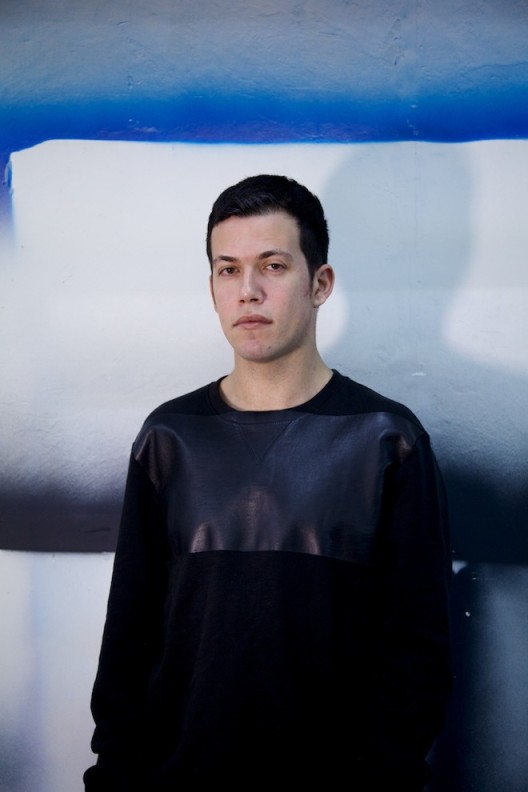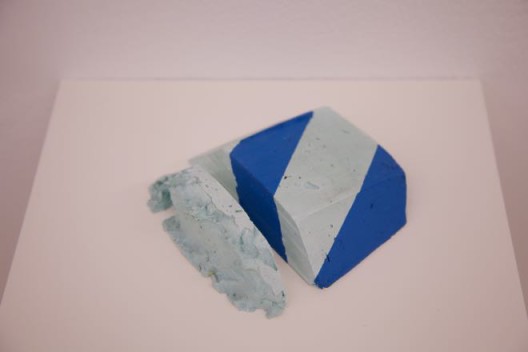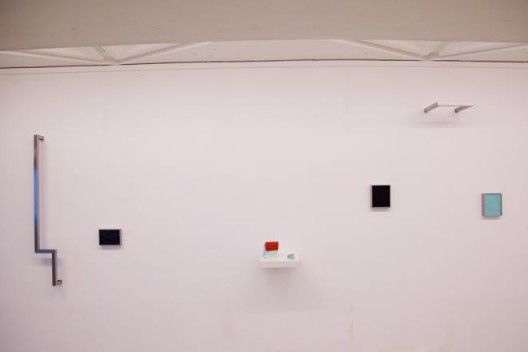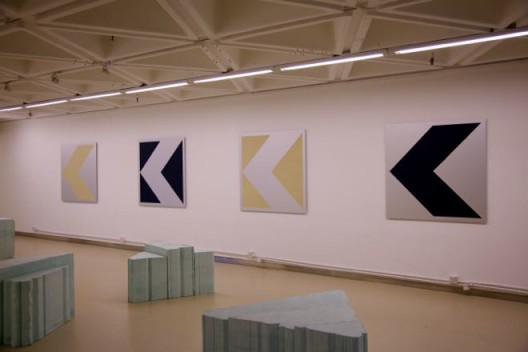João Vasco Paiva
In The Book of Dave, Will Self imagines a post-apocalyptic future in which our “modern history” has been almost erased, where the diary of an ordinary London taxi driver—a diatribe that was randomly unearthed—has been adopted as the creation story and theocratic law for a regressed people. In this future—which might yet come to pass—wherein England has become an archipelago of islands, the “Creation” is referred to as “MadeinChina” because many of the found objects unearthed bear the imprint “Made in China” on them. The dual theme of the metaphor of the island (a geographic, temporal, social, intellectual and cultural fortress/prison) and the randomness of objects and events, (with the abandonment of objects, through rejection and failure, as well as their reincarnation as archeological treasures and religious tokens—as art!) echoed in my mind when reflecting on the works of João Vasco Paiva. His works play with abstractions of an everyday cultural geography of vertiginous contrasts; his practice, frequently departing from happenstance discoveries, is refracted by an archaeology of the present that generates its affective work through displacements.
Born in 1979 in Coimbra, some 200 kilometers north of Lisbon, João Vasco Paiva headed to Hong Kong after having graduated from Porto Art School (E.S.A.P.). With a scholarship from the Orient Foundation in 2006, he pursued a Masters in Fine Arts in Creative Media at the School of Creative Media, City University of Hong Kong. He has been a Hong Kong resident ever since.
The move to Hong Kong was almost random but, as Paiva said to me in conversation, “During high school and at uni, all my close friends were from Macau—Chinese-Portuguese, Chinese, Macanese.” Though the circumstances may seem random, the move actually opened up some artistic possibilities. “At the time I felt everything in Europe was the same,” says Paiva, “I was tired of the historical ways I had to carry on my back.” Portugal was perhaps not a formative influence in his artistic career; in fact, he considers the few early shows he held there irrelevant.

João Vasco Paiva, “Translucent Debris”, acrylic panels, 15.2 x 39.5 x 60 cm (corner piece) and 18 x 22 cm (floor piece), 2013(photo courtesy: the artist and Edouard Malingue Gallery)
周奥,《透明碎片》,亚克力板,15.2x 39.5x 60厘米(墙角部分),18×22厘米(地面部分),2013(图片:艺术家及马凌画廊)

João Vasco Paiva, “Untitled (from the Wanchai Market 1)”, oil on stone resin, 60 x 44 x 35 cm each, 2013(photo courtesy: the artist and Edouard Malingue Gallery)
周奥,《无题(湾仔街市1)》,树脂人造石上油彩,60x44x35厘米/个,2013(图片:艺术家及马凌画廊)
People are notably absent in Vasco Paiva’s work; his interests look up to a higher level, of systems human, physical, or otherwise. Even a street video of people accidentally bumping into the artist is so “corrupted” or glitchy as to make them indiscernible. Yet an anthropomorphic thread of usage and repetition runs throughout his work, the apparently abstract patterns sitting closely with human experience. Images and forms that initially appear abstract, like his wall works—that is, not realistically mimetic or expressive—are actually drawn from the quotidian urban landscapes of high modernity, particularly regarding Hong Kong (one of the paradigms of urban hypermodernity). Seemingly random systems of existence emerge and ignorance slowly precipitates meaning. Things are recovered. The shipwrecked survivors begin to understand, or to create an understanding. It is a type of knowledge, possibly scientific, possibly not.
Systems already in place work against other systems—ideas, interpretations, and correlations—molding and scarring them, creating hybrid systems, momentary and enduring. Each compels an engagement with its user-subjects, whether willing, incidental, or forced. “Counterpoints” (2011)1, a row of mass transit railway turnstiles that count invisible commuters in time, is an archipelago and a barrier, liminal space and limit-space. As a minimal art work, it is simply beautiful—it counts people (it is automated to move according to the number of people that pass through their counterparts during rush hour in the central station). For the same reason, it is disturbing for its ghostly or machine animism. “How space is designed says more about people than if I include the human body,” says Paiva. Another work, “Forced Empathy” (2011), shows a buoy afloat in the sea, with the Kowloon skyline behind it (in fact, the nascent West Kowloon Cultural District): the buoy remains perpendicular while the sea and landscapes rock to and fro. A buoy is a type of island, a system of navigation; here, it is also a matter of perspective, an ordering of vision. More recently in “Thresholds”, a video work from 2013, advertising from light-box billboards in a section of a flyover was removed—repurposed, adapted—the formalist oblongs invading and lighting up the suddenly un/familiar arterial space.
There are also physical systems, such as wind and sea currents (“Forced Empathy”) but also the degradations of time on bricks and masonry, including the wrecker’s ball, accidents and abuses, decorations, camouflage and tribal codings, the surfaces of broken pieces of wall splashed with dumb graffiti fragments. During a summer residency in Berlin in 2014, Paiva collected and refined pieces of masonry from a demolition site near his studio in Lichtenberg. Most were no more than knee-height or just big enough to be held in the hand. Each was accorded respect, carefully placed on low plinths cut from insulation panels or the concrete holding bricks together, and painted a bright cerulean blue. One piece of masonry with parallel slashes on its side recalls the angle of the teetering buildings in “Forced Empathy”. All the works were documented and arranged together and, at the end of the residency, many were simply returned to the construction site.
The artist isolates himself on Lamma Island, one of Hong Kong’s last remaining rustic havens. Along the coast, Paiva often finds flotsam and jetsam to incorporate into new works, including weathered concrete blocks and Styrofoam forms. Recycling and repurposing is another thread of his practice: the mis-appropriation is thematic. “When you grab something that is already thrown away, not used any more, that can lead to a series of actions, not just a history.” This is not about repurposing existing detritus but the concept of the rejected and lost objects, their raison d’être. Paiva created a resin copy of a “Styrofoam box”, which looked as if it had aged in the sea and the Hong Kong wet markets longer even than the “original” that inspired it. The result is a concrete monument—a container doppelgänger—far heavier and more real than reality. Polystyrene, a material composed of air-filled polymers, light to carry but easily marked, along with the use of concrete, the dense, heavy and key material of the modern city, sets up a central conflict in the artist’s work: the strain between the permanent and temporary, compression and density, transportation and containment—no man is quite an island and no island is quite free.
In 2012, the Lamma Island ferry had an accident in which 39 people lost their lives and almost 100 were injured. The tragedy is revisited in a work Paiva created for his “Cast Away” exhibition in 2014 at the Orient Foundation, Macau. A fiberglass cast of a boat (that looks like concrete) sinks into a blue pixilated carpet on the floor, the angle of the prow recalling photographs of the incident. On the walls nearby, hung copies of polystyrene rescue flotation devices. Accompanying the ghost-wreck were a number of ghost-maps of islands, transparent blue elevations, with their plinths reflecting the design of the building, a seventeenth- century house originally built with the intention of replicating a European residence and providing an amulet-protection from the exotic “island” outside. These jewel-like artifacts recall João Vasco Paiva’s earlier series, “Translucent Debris”, Constructivist-like sculptures that played on their component parts—including the remains of colored Perspex—the ability to physically bend and also to refract, filter and reflect light. Another work, a totem pole comprising a resin cast of a piece of a polystyrene packaging for a large TV monitor, again plays with notions of copying and transformation, space and compression.
Paiva’s work always begins with a search—beachcombing, hunting, gathering, sorting, collating, analyzing. The remnant rubble, breeze block negative spaces, and the fissures in a concrete pier are about human enterprise and introversion, curiosities and fears, and the systems we have created to conquer them. As the artist commented to me, “What connects everything [in the works] is a sense of isolating objects and situations.” It is the alienation or misappropriation of the objects—these redeemed pieces of masonry—that gives them value. Objects go through different states but matter does not disappear—only our perspective and definitions of it.
Every man is a piece of the continent,
A part of the main.
If a clod be washed away by the sea,
Europe is the less.2
Notes
1. Also known as “Subway Turnstiles” (2011), it was shown at the “Hong Kong Eye” exhibition at Saatchi Gallery London in 2012.
2. From “No man is an Island” by John Donne (1624)
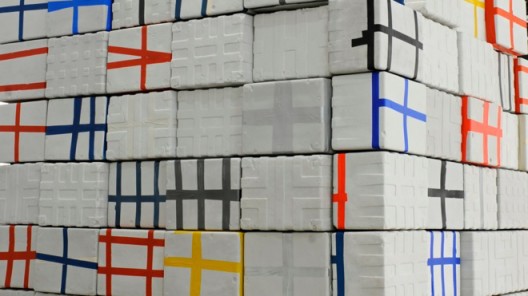
João Vasco Paiva, “Mausoleum”, latex and lacquer on stone resin, steel structure, 360 x 360 x 570 cm, 2015
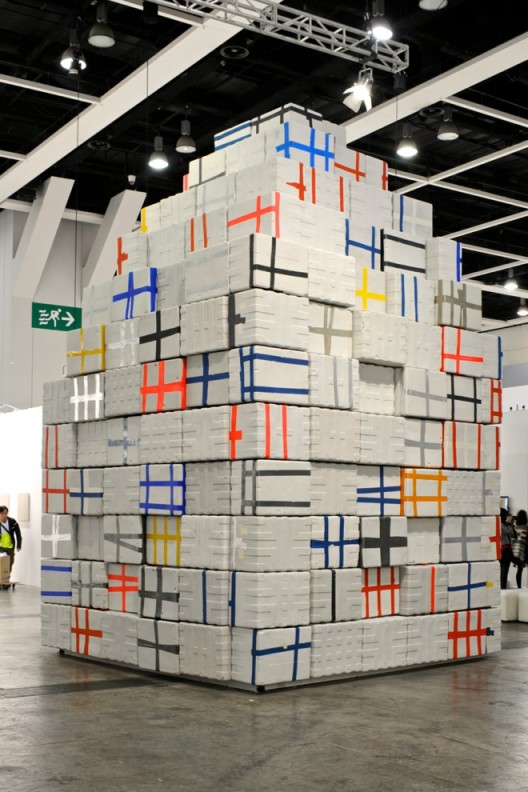
João Vasco Paiva, “Mausoleum”, latex and lacquer on stone resin, steel structure, 360 x 360 x 570 cm, 2015
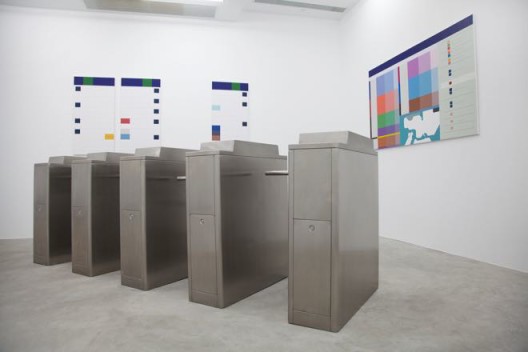
João Vasco Paiva, “Palimseptic”, exhibition view, Saamlung, Hong Kong, 2011(photo courtesy: the artist and Edouard Malingue Gallery)
周奥,《Palimseptic》,展览现场,Saamlung画廊,2011(图片:艺术家及马凌画廊)
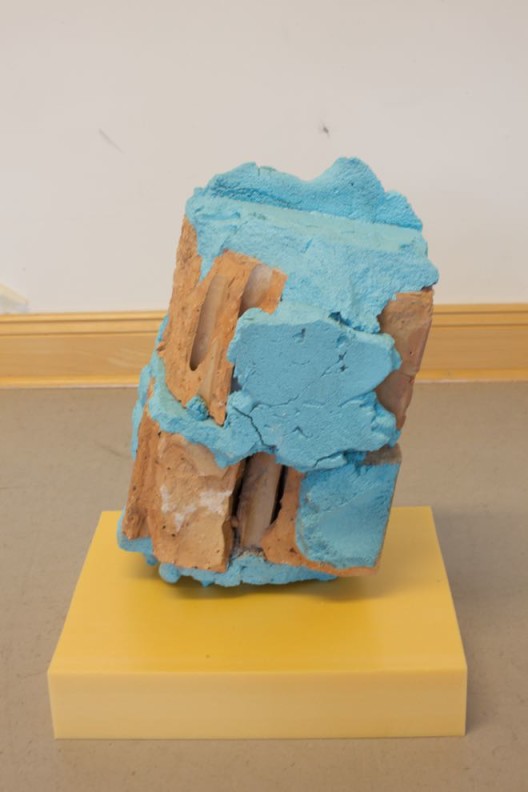
João Vasco Paiva, “Fragment 5”, Lichtenberg Studios, Berlin, 2014 (photo courtesy: the artist and Edouard Malingue Gallery)
周奥,《碎片5》,李希腾贝尔工作室,2014(图片:艺术家及马凌画廊)
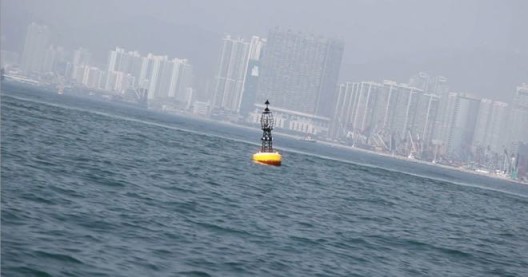
João Vasco Paiva, “Forced Empathy”, video, 7 mins 29 secs, 2011(photo courtesy: the artist and Edouard Malingue Gallery)
周奥,《强制认同》,录像,7分29秒,2011(图片:艺术家及马凌画廊)

João Vasco Paiva, “Translucent Debris”, acrylic panels, 15.2 x 39.5 x 60 cm (corner piece) and 18 x 22 cm (floor piece), 2013(photo courtesy: the artist and Edouard Malingue Gallery)
周奥,《透明碎片》,亚克力板,15.2x 39.5x 60厘米(墙角部分),18×22厘米(地面部分),2013(图片:艺术家及马凌画廊)


